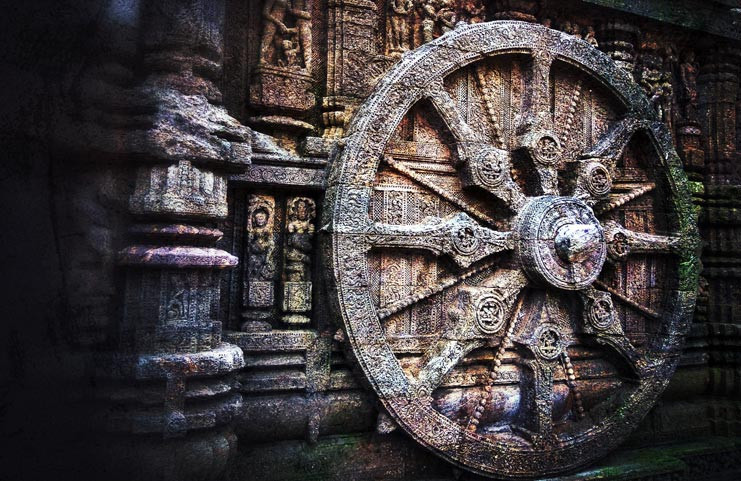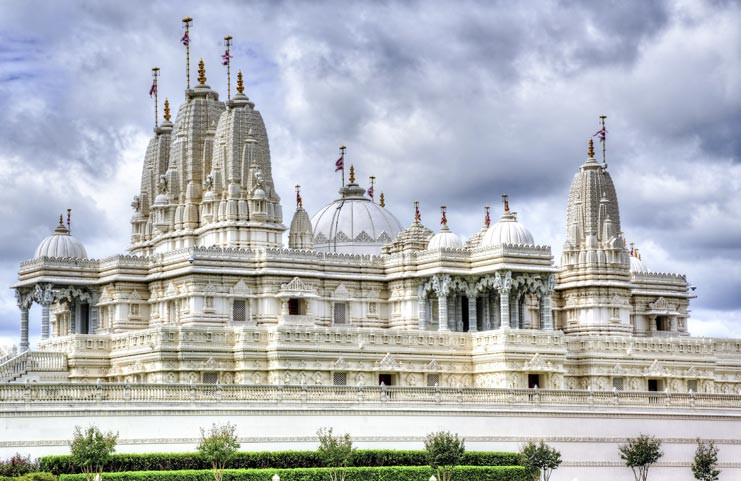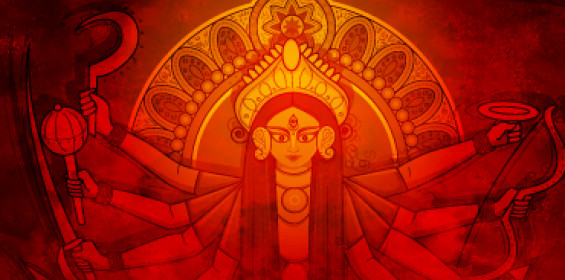Amazing facts about India.
The ancients interweaved every aspect of life with science, logic, and a deep reverence for life. Some aspects could be interpreted differently, but what is the truth?
Bharath Gyan, a passionate research initiative, is painstakingly dotting the pieces together, foraging amongst lost remnants to keep the glorious past alive and known.
Here are a few nuggets about India’s incredible temple tradition, the science of namaste, and the concept of karma and dharma:

Join a Free workshop on Yoga, Meditation and Breath
Idol worship and temples
Have you ever wondered why does the Indian civilization have so many Gods, so many kinds of idols, so many temples? As per the Indian philosophy, the Supreme one has manifested into different forms to represent various forces, principles and functions of the cosmos classified into:
- Devi / Devata (the functional forces)
- Bhagavan, Tattva (the principles)
The Indian temples that were built as a sanctorum to worship these forces were also designed to act as a community activity center.
- The tall temples which had a deep foundation, could survive natural calamities.
- With copper on top and earthing of the sanctum sanctorum with a copper wire, the temple could also withstand lightning bolts from the skies.
- The alcoves of the tall temple towers were used for the safekeeping of seeds, grains and other life essentials for survival of the people during mass disaster.
- The underground vaults were used for securing gold and other precious artifacts for revival of the village in case of any major calamity.
- Every temple had one or more natural spring-based water tanks attached to it called pushkarni for harnessing water. Pushkaram means to make fertile. Other than helping people cleanse themselves before congregating, these tanks were harbingers of fertility to the land as they helped increase the water table in the village.
- The temples also served as a community kitchen and dining where food offered to the deity was shared as prasad - a community meal.
Thus, the village community grew around the temple and the temple tank.
The temple pattern, design and architecture from India was also replicated all over South East Asia due to the spread of Indian influence to these areas. Some of the renowned ones being - Prambanan in Java, Indonesia; Angkor Wat in Cambodia; The Candis in South East Asia; the temples of Bali.
There is a similarity between Indian temples and tradition of Egypt, ancient Turkey, Azerbaijan, Central Asia as well as with that of Central and South America.
Eugene Emmanuel Viollet De Luc, the celebrated French architect and art historian of the 1800s, said: “The Mayans who travelled from ancient India to ancient central America were great builders by profession. When they travelled over the seas, they took their skills of building large monuments along with the basic measurement systems because the base measure and the square grid methodology of vastu, is common between the structures of India and that of the Mayan Civilization of Central America.”
True meaning of karma
In a recent research by Pew Research Center, they came to the startling find that about 60 percent of Americans today believe in karma. Karma originates from the Sanskrit root kr, kar meaning “to do”, “to act” which is why hands are called karam.
Krishna says to Arjuna in The Bhagavad Gita,
Karmanyevadhikarasthe ma phaleshu kadachana
Ma karmaphalaheturbhurma te sangostvakarmani
i.e
You only have the right to do your duty, you are not entitled to the fruits of your action. You are not the cause for the results of your actions. But do not shy away from action in doing your duty.

What is karma?
One only has to act “rightfully”, do one’s Dharma. The karma follows on its own and is beyond the individual. This goes for every living being on this planet and the rest of the Universe. These consequences arise as a collective response of the Universe to all the actions committed in the Universe, both in the past and the present. Hence, we are all equally and collectively responsible for shaping the Universe, our individual lives and that of others, for now and for the future.
The ideology of karma is believed to have given rise to proverbs such as:
“Do unto others, what you will have them do to you.”
“As you sow, so shall you reap”
Our ancient sages mastered the secrets of the breath and the mind. In many ways, this is our heritage. Unlock these secrets in these modern times, and keep the legacy alive at The Art of Living Meditation and Breath Program.
Learn what our ancients knew about the mind and breath. They are all the remedies you will need. I'd like to know more>>
Shakespeare, the English playwright, speaks of such consequences. In most of his plays, the themes revolve around “the act” and its consequences.
Newton in his 3rd law also speaks of this concept as a principle of the physics of the Universe by stating that “Every action has an equal and opposite reaction.”
The humble science of namaste
For thousands of years, namaste has been a distinct way of greeting in India. By joining one’s palms, facing together, in front of one’s heart, one offers a heartfelt salutation.
The word namaste comes from Nama, Naman meaning salutation, obeisance, adoration, bow, homage.

Every individual in this cosmos, however big or small, animate or not, is divine and worthy of salutation.
Namaste forms an integral part of many Yogic postures. The joining of the palms in Yoga - the anjali mudra symbolises unification - which connects
- the artistic right and logical left hemispheres of the brain together
- the gross and the subtle together
- the divine and the human together
- the other and the self together
- the receiver and the giver together
With India in a tropical climate zone, people are prone to infections from bacteria and other microorganisms. Namaste eliminates the need for physical contact while greeting others. Hence, other forms of greeting like hugs, kisses, handshakes, nose rubs have never been innate modes of greeting in India.
Travellers, traders who went to China, Japan and South-East Asia, to countries like Thailand, Cambodia, Indonesia took this concept of greeting there, where it was adopted and assimilated into the local cultures.
- It is practiced In some forms of martial arts as a mark of mutual respect before sparring at each other.
Huike was the primary disciple of Bodhidharma, a Buddhist, who had travelled from South India to China and who is considered as an early founder of martial arts, meditation and Buddhism in China. Since Huike had only one hand, he would do namaste with just one open palm before sparring with his opponents.
In his honour, it became a practice with the monks at Shaolin temple and in Kung Fu, to greet each other with a single-handed namaste.The Burmese greeting word Mingalarbar means ‘auspiciousness to you’.
Mingalar means auspiciousness in Burmese language and has its roots in the Indian Sanskrit/Pali word, mangala.- This Mingalarbar came into practice to replace the English way of greeting which had percolated profusely into Burma / Myanmar during the colonial rule.

True meaning of dharma
The word dharma is used interchangeably to denote religion. However, dharma, at a simplistic level means character, to behave in order with oneself.
Every object, animate or inanimate has its own character, a basic nature, it’s dharma.
For example, it is human nature, to have an ego. At the same time, love and compassion too are emotions that are innate and fairly well developed in humans.
We speak of ahimsa, i.e. not hurting anyone, to be a human quality, as per dharma. But a tiger’s nature to kill its prey for food - is the dharma of a tiger.
Similarly, the basic nature of the earth - to spin on its axis and go around the sun - is its Dharma.
The moon’s dharma is to go around the earth, waxing and waning every fortnight. It is the basic dharma of the sun to be scorching hot, to spread light and to make the planets revolve around it.
The difference between law and dharma is that: ‘Law sets the tone to punish an offence, dharma sets the tone to prevent offence.’
Dharma includes the coexistence and cooperation of the entire Universe, not just the people alone. Every person and everything in this universe has a role to play.
Hence if we are all to live as per dharma, we have to think of others first and play our role to perfection and respect our interconnectedness.
The material has been sourced from @bharathgyan. This research team, led by a passionate husband-wife duo - Dr. DK Hari and Dr. Hema Hari, unearth some of India’s untold stories and make them contemporary. You can click here to buy any of their books on Indian civilisation.

































